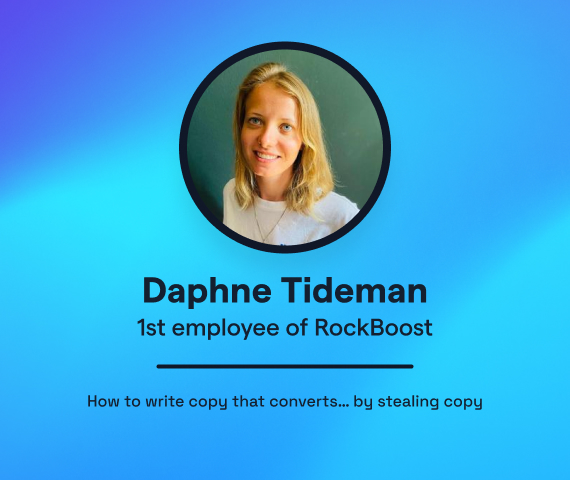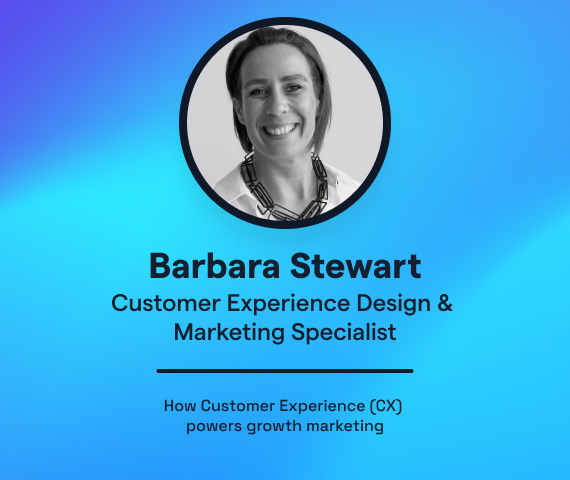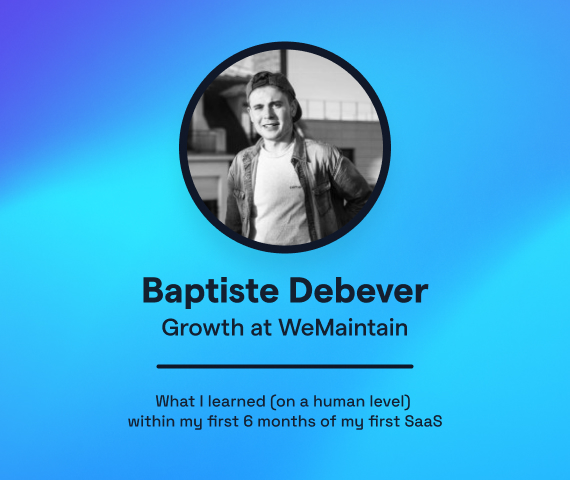How to Start an Online Business: The A-Z Guide From Idea, to Build, to Launch Strategy
Entrepreneurs face a huge number of decisions when looking to start their online business. Having co-founded a venture backed marketplace and spoken to a bunch of really great early-stage founders through my mentoring work at GrowthMentor, I understand the ambiguity of the situation.
Whilst there is no substitution for hard work, grit, and a tight feedback loop once you have launched your online business, the sheer volume of decisions to be made prior to launch can be paralyzing:
- ‘How should I sell my product?’
- ‘Who is my target audience?’
- ‘Are there actually people out there that are willing to pay for this thing I want to sell them?’
– These are just a few of the questions you’re probably asking yourself.
In order to help entrepreneurs, I’ve outlined a series of steps that draw on theories, methodologies, and frameworks that I’ve found helpful to guide my thinking. For the sake of brevity, I’ve named the approaches and, wherever possible, provided links to resources that give these ideas the space and further discussion they deserve.
It’s my hope that this post can serve as an introduction to new ideas, and an opportunity to see how these ideas can complement one another in a contiguous process, all with the aim of getting your business to Product Market Fit sooner.
Let’s begin with the Problem Definition stage.
Problem Definition
Entrepreneurs are known for launching into a venture with a very clear idea about what it is they want to create. Often the vision is so clear, and the entrepreneur is so convinced of it’s merit, that they jump straight into creation mode.
After all, ‘The sooner your start, the sooner you finish’ – right?
Unfortunately, that’s rarely the case.
Not only is a business never really ‘finished’, if you jump into things too quickly you’re at risk of wasting an enormous amount of time and money solving for a problem that doesn’t exist. Or, alternatively, solving for a problem that is just a symptom of a much larger, much more valuable problem to be solved.
In this section I’ll be discussing ‘Finding the Root Cause’ of problems, and will offer some tips to validate your startup ideaby connecting with potential customers.
Finding the Root Cause: Digging into Lean Six Sigma’s Five Why’s
Whilst there are no hard and fast rules about how to determine what problems are worth solving with an online business, one way to interrogate an idea is to complete the Lean Six Sigma’s ‘Five Why’s’ exercise.
Borrowing an example from Spears & Stephen’s ‘The High Velocity Edge’, a problem your customers could be facing is – ‘My car won’t start’:
- Why? – The battery is dead.
- Why? – The alternator is not functioning.
- Why? – The alternator belt has broken.
- Why? – The alternator belt was well beyond its useful service life and not replaced.
- Why? – The vehicle was not maintained according to the recommended service schedule. (The root cause).
From this example, we can see the reason the car won’t start is because the battery is dead. If it’s difficult to get a battery charged again, it’s safe to consider battery charging a customer pain point. Where there’s a pain point, there’s an unmet need, and if there’s an unmet need, there’s a business opportunity.
But is getting a battery charged the best opportunity?
It’s almost always best to work on root cause problems (vehicle maintenance) rather than symptomatic issues (battery charging). Looking at the rest of the ‘Five Whys’ it’s clear that the dead battery is just a symptom of a much larger pain point. The root cause of the dead battery is that the vehicle has not been maintained correctly. If the vehicle is maintained correctly, then there won’t be any need for a business that has been built to charge batteries. This is bad news, if you are in the battery charging business.
When working through your Five Whys, it’s important to acknowledge there are probably lots of different root causes. Spending some time coming up with alternate solutions, followed by sharing the various solutions with a partner or confidante (a method known as ‘diverge then converge’) will be time well spent.
Talk to prospective customers
Borrowing from the principles of ‘Design Thinking’, it’s incredibly important to focus on developing a human-centered understanding of the problem, prior to going into solution mode. For this reason, it’s best to talk to prospective customers early in the process, by conducting market research.
Market research can take innumerable forms; however, an analysis of over 17,000 research studies has shown that a robust screener survey followed by a paid 1:1 remote research interview yields the best bang for your buck. Not only does this approach yield both quantitative and qualitative data, but it’s also incredibly cost effective, as incentive costs are restricted to paying high value respondents who participate in the qualitative interview portion of the study.
The purpose of conducting research is threefold:
- A nuanced understanding of how people solve for the problem currently
- A target customer profile
- A list of contacts, who could become early customers
In order to help get you started, I’ve put together 5 practical tips.
How to get user feedback for your business idea
Create your survey using Google Forms.
- Use a mixture of multiple choice, open ended and force ranking questions to get the most value out of your screener.
- A detailed guide on how many questions to ask can be found here.
As an incentive, offer $1 per minute.
- For a 30 min call, offer a $30 Amazon Gift Card. This will be paid to those who participate in the interview part of your research.
- An overview of why incentives are important can be found here.
Use Respondent or Craigslist to find participants.
- Respondent is the best solution out there if you have a budget to help with recruitment, and if you want participants with verified employment and participation history. However, as a co-founder, I’m obviously biased…
- Craigslist is cheap, and you’ll get a ton of responses, but make sure you collect links to LinkedIn profiles to make sure the person you are speaking to is who they say they are online.
- Online communities to collect feedback to validate your startup idea.
Use Calendly and Zoom to arrange and complete interviews
- A guide on the right number of participants to interview can be found here, but aim for no less than five.
Be kind
- The people you interview could be some of your earliest customers!
With a well grounded understanding of your target audience, the next step is to design a solution and get your plans down on paper.
Online Business Ideation
The Jobs To Be Done theory, PESTEL analysis and The Lean Canvas are all tools designed to help you hone your business value proposition. When combined and applied, you’ll be ready to take your online business to market.
Define your job to be done
The ‘Jobs To Be Done’ theory (JTBD) teaches us that people buy a good or service for the job it will do for them, rather than for the sake of buying the good or service itself. Getting a clear understanding of your JTBD is important, as focusing on your customer needs will provide a central tenet around which you will build and market your product.
Returning to the problem of ‘My Car Won’t Start’ detailed in the first article, the job to be done in this instance is ‘Get the car to start’. It may sound obvious, but given the same circumstance, lots of companies will position themselves as the premium service for ‘recharging batteries’ or ‘fixing the alternator belt’. Whilst these tasks do need to be completed in order for the car to start, it’s not the reason people are paying for the service.

Unfortunately for online businesses, the ‘Job To Be Done’ is rarely as straightforward as ‘Get the car to start’. To use JTBD parlance, customers will compare your product to others in the market using a set of ‘hiring’ criteria, which can include price, convenience, emotion, aesthetics, or whatever matters to them. For instance, the JTBD in the car example could be ‘Get the car to start within a day of dropping it off’ or ‘Get the car to start and feel relieved’. See the added complexity and nuance?
Returning to your market research, analyse the responses you have collected and work to distill what matters to your customers. This analysis should consider both the functional aspects of the job (what is the actual deliverable in concrete terms) and the emotional aspects of the job (how it makes them feel). Generally, you’ll find that your JTBD is some combination of rational and emotional components.
Understand the landscape
Borrowing from the Market Intelligence toolkit, a PESTEL Analysis is a great way to start your investigation into the “big picture” innovations as well as the risks that exist in the market you’re about to enter.
PESTEL stands for Political, Economic, Social, Technological, Environmental and Legal, and is a framework that will allow you to investigate prospective areas of innovation and possible threats to your online business, which you might not have otherwise considered as relevant.

For example, Policy (covered under ‘P’ for political) is an area that most new online businesses fail to consider. However, as we saw with the introduction of the GDPR, ‘Policy’ can have a profound impact on the way your startup operates. Whether the GDPR is an opportunity or threat, depends on the type of online business and whether the business was cognizant and prepared for the change.
With a completed PESTEL analysis, you should now be properly armed to build a considered and well-crafted business plan that draws on the cutting edge of what is available in your market, whilst ensuring that you are avoiding unnecessary risks.
Distill your idea
The Lean Canvas is a one-page business plan that’s a really great tool for making your idea easy to communicate.
The information you have gathered in the previous processes will mean you can steam through most of the business plan:
- ‘Five Why’s’ will inform ‘Problem’ Section,
- ‘Job To Be Done’ will help you fill out the ‘Solution’ section, and
- Using your Market research insights the ‘Customer segment’ and ‘Unfair advantage’ sections.

This leaves key metrics, channels, cost structure, and revenue streams for us to consider, in order to complete the lean canvas.
- Key metrics – Revenue and funnel conversion are most important at this stage.
- Channels – It’s hard to beat email + LinkedIn for B2B businesses. For B2C think about ways to promote your online business, for free, on platforms like Facebook and Reddit, as well as improve your SEO standing for Google search results.
- Costs – It goes without saying, but try to minimize them. If you don’t need it to win and complete your business, don’t pay for it.
- Revenue streams – Start with one. More than one revenue stream and you’ll have a difficult time focusing on it.
With a clear understanding of your purpose, confident in your knowledge of the market, and a tight business plan in your back pockets, it’s time to start sharing your idea.
Build some hype
Before thinking about building anything that requires code, it’s advisable to first build out your online presence with a ‘drag and drop’ style marketing site. The marketing site doesn’t have to have all the bells and whistle, but what it should do is communicate your unique value proposition, and generate interest in your solution.
In order to get started as quickly and cheaply as possible:
- Register your domain name with GoDaddy – Starting at $0.99c a year
- Build your website with Wix Premium – $13 a month [but check for coupons]
- Register with Google Suite to get a custom domain email address – $6 per user a month
- For inspiration, check out some color schemes from an established and stylish business. If you’re curious, you can find color codes by uploading a screenshot here.
Now you’ve got your pieces together, it’s time to start filling out the Wix template. The objective is to optimize your website to collect the email addresses of interested customers. Once you have an email address, you have a potential customer. If you can connect with a potential customer, you have an opportunity to make a sale. Whether you make a sale or not, by being in contact with your potential customer you have an opportunity to learn about your target audience and hone your offering. Even though you don’t have a product yet, focus on the collection of emails!
Some tips for optimizing your website for conversion (aka collecting email addresses):
- In the hero text, tell people what you do for them in plain, clear language. Your Job To Be Done should serve as good inspiration.
- Collect email addresses in as few clicks as possible. It’s tempting to collect a bunch of details through your form, but don’t worry about it at this stage. You can qualify the details you would have otherwise collected in the form later. It’s more important to collect interest.
- Build social proof. Get a few friends to review your product / service, even if it’s very early days and get them to say some nice things.
- Keep it clean and simple. Chances are, it’s going to change quite a bit in the coming days as you respond to feedback from early customers, so don’t over invest in finicky design details too much just yet.
- Check out your competitors and/or industry adjacent businesses. The main things to consider are the information hierarchy and the FAQ’s. Chances are your target customers will be familiar with this layout, and looking for these answers.
With a way for your potential customers to get in touch, it’s time to start pushing your business.
Go To Market
Having honed your job to be done, validated your solution, and distilled your business plan, it’s now time to start putting in the hard yards.
But where do you start? Building a product, or winning customers?
In some ways, it’s a classic chicken and egg dilemma; ‘Without a product I can’t have customers, but without customers I don’t need a product’.
Unfortunately, many Founders fall for the trap of building a product first in the belief that ‘If I build it, they will come’, only to come up for air a couple of months later to realize that no one wants to buy it. Whilst burying yourself in code is definitely less awkward than getting into the sales cycle and cold calling strangers – there’s no point building something nobody will use. That’s why you need to sell, and continue selling until you make a sale, before you start to build.
Sell
For a lot of people, the Sales function conjures up negative images of snake oil salesmen doing anything to make a quick buck. But a much better way to look at sales is as an opportunity to consult with potential customers and help them solve real business problems. Not only will taking a consultative approach to sales serve to further deepen your understanding of your target market, it will also allow you to properly articulate these requirements later when it comes time to build your product.

Your objective in the early days is simple; Get a single customer, who is willing to pay for your product or service.
If there is one person willing to pay for it, the chances are good there is someone else who is willing to pay for it as well.
Not only is a sale a toehold on a potential business, but it validates the investment required to build your product.
Four principles of sales:
- Go hard. Get in front of as many people as you can, as quickly as you can. In the words of Paul Graham in his seminal startup article, ‘You can’t wait for users to come to you. You have to go out and get them’.
- Be deliberate. This means being methodical in who you approach and how you approach them, and recording this information. You can’t improve what you can’t measure.
- Be constantly improving. Listen to what your customers have to say, and adapt your pitch and approach accordingly. In the same way that you adapt your product to the needs of the customers, you should adapt your sales approach to the needs of the customers also.
- Sell until you make a sale. There’s nothing more important than getting money out of someone else’s pocket and into yours (ethically). Earnings and liquidity are what drive businesses. Nothing else matters.
With these principles in mind, here are a few ‘Growth Hacking’ techniques that I’ve found useful to supercharge sales efforts.
Early-Stage Growth Hacking Tactics:
- Upgrade your LinkedIn account: For B2B businesses, there’s no more valuable resource.
- Harvest email addresses: There are lots of web scraping tools out there, and lots of people who can help you with this. Email is WAY more effective than posting ads. Plus, it’s easier to tweak on the fly in response to results, and it’s cheaper. But don’t just spray and pray. Highly bespoke emails will allow you to maximize your chances of getting a response, and also mean you don’t blow through all your email addresses with messaging that doesn’t work.
- Outsource the manual work: Services like UpWork enable you to connect with highly skilled freelancers, for as little as a few dollars an hour. When hiring freelancers, make sure you set them up for success by being incredibly descriptive in your task. My second hot tip is to limit the scope of your first engagement with a freelancer. This way, if things don’t work out – it’s easy to part ways.
- Post free ads on social networks: Think Facebook groups, Reddit forums, Craigslist etc.
- Join Slack groups: The chances are there is a Slack group for your industry. Not only will this serve as a unique insight into the challenges your industry is facing, but it will allow you to connect with potential customers in a safe space. One word of advice, Slack groups are meant to be communities, not sales channels, so make sure you actually contribute – the sales will come later.
- Pick up the phone: Phone calls have gone out of fashion, and cold calling can seem like a lot of hard work. But, if you do have a phone number, use it. Emailing, followed by a message on the phone is a great ‘one-two’ combination that is hard for prospects to ignore.
With no product to hold you back, you have only the sales process to blame if things don’t work out. Sell until you get a sale.
Once you’ve made your first sale, it’s time to turn your attention to building a Minimum Viable Product (MVP).
Build
Not only does building in response to a sale mean everything is ‘pre-sold’ (meaning nothing you build will be wasted) it also provides a great opportunity to extend your relationship with your customer by engaging them in the process of building the product they have bought; effectively extending the consultative approach you nailed in the sales process and allowing you to get a detailed and accurate idea of their ‘job to be done’.
With the JTBD in mind and a willing product expert on hand (your paying customer), here are some tips for approaching the build of your product:

- Build a skateboard, not a car: This means focusing on the job to be done, and literally nothing else.
- Think about what you can puppet: In product parlance, ‘puppeting’ refers to working behind the scenes doing manual work ‘pulling the strings’, that your customers will perceive as automated or productized.
- Surprise and delight. Not only will this massively increase the likelihood this paying customer will return, but it also increases the likelihood they will refer your service to a friend. This positive viral coefficient is crucial for building an online business, and should be built upon in every interaction.
- Over communicate through delivery: Chances are your customers know you’re an early stage business. Be real with them. Communicate regularly, and honestly. This is a learning moment for both of you.
- Get it done: Don’t worry if your first sale isn’t profitable or the process to deliver the good or service isn’t scalable – just make sure you nail it.
Now you’ve got your first customer, and an MVP of your product built, it’s time to refocus on the process of selling.
Continuous improvement
Once you’ve got the flywheel of your online business spinning, it’s surprisingly difficult to know where to focus your energy between the dual demands of selling and building products. However, there’s no reason to change the strategy that has already been working for you; continue to sell what you have (Product A), and begin building something new after you have already sold it (Product B):

Until you build a team that will allow you to run both Product and Sales processes simultaneously, your priorities between sales and product should continue to be dictated by the ‘build in response to a sale’ approach – only shifting to product when a sale has been made, and shifting back to sales after a product is delivered:

By taking an iterative approach to building your product, and building only in response to a sale, you will reduce costs, avoid expensive mistakes and get whatever it is you’re building into the hands of people willing to pay for it, sooner.
By adopting a growth mindset, placing your customers at the center of your decision making, and being receptive to adapting your pitch, adapting your product roadmap and even adapting your online business in response to where the dollars are coming from, your budding enterprise will be a commanding position to accelerate towards product market fit.
If you have any questions or comments, or would like some feedback on your online business idea – I’d love to hear from you. You can contact me at [email protected] or through Growth Mentor, with the subject line – ‘Company Growth’, and I’ll get back to you as soon as possible.



